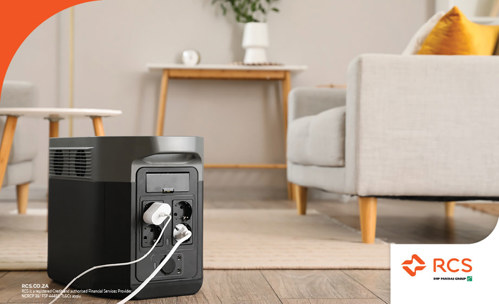Inverters vs Solar - How To Beat Load shedding & What It Costs
10 AUGUST 2023
We’re in the dark, literally, when it comes to loadshedding and how long it will linger. For this reason, we look at two solutions, solar and inverters, to determine which is best for you. Loadshedding has created a surge in interest for alternative power options. Two of the most popular choices currently are portable inverters, or solar backup power systems. In this article, we look at these two solutions in a little more detail to assist in helping you decide on the best option for your home.
Loadshedding has created a surge in interest for alternative power options. Two of the most popular choices currently are portable inverters, or solar backup power systems. In this article, we look at these two solutions in a little more detail to assist in helping you decide on the best option for your home.
Solar Power Backup Systems
Solar power backup systems are usually larger systems for your household, often geared to allow you to continue almost as per normal when there are power cuts. These systems typically consist of solar panels, an inverter, a battery storage system, and the necessary electrical components. During normal operation, solar panels generate electricity from sunlight, which is converted from direct current (DC) to alternating current (AC) by the inverter for household use. Excess electricity is stored in the batteries for later use.
When a power outage occurs, the solar power backup system automatically switches to battery power, providing uninterrupted electricity to critical appliances and devices in the home. This ensures that essential functions, such as refrigeration, lighting, and communication, can be maintained during loadshedding or emergencies. Solar power backup systems are typically installed permanently and are connected to the electrical grid, allowing for the option of feeding excess electricity back into the grid when the batteries are fully charged.
For this reason, solar backup systems are best suited to homeowners who are looking for long-term solutions.
Portable Inverter Options
Portable inverters, on the other hand, are versatile devices that convert DC electricity from a portable power source, such as a battery or a solar panel, into AC electricity suitable for powering small electronic devices or appliances. These inverters are more compact and typically designed to be used ‘on-the-go’. They are commonly used during camping trips, road trips, or in situations where access to electricity is limited or non-existent.
Portable inverters come in various sizes and power capacities to accommodate different energy needs. They typically offer multiple AC outlets, USB ports, and DC power outlets, allowing users to charge and operate a range of devices, including laptops, smartphones, cameras, and small appliances. Some portable inverters also include built-in batteries, enabling them to store energy for later use or as a backup power source.
Differences and Considerations
Power Capacity: Solar power backup systems are typically designed to provide larger amounts of electricity, capable of supporting essential household loads during extended power outages. Portable inverters, on the other hand, are more suitable for powering smaller devices and appliances for shorter durations.
Installation and Mobility: Solar power backup systems require professional installation, as they involve mounting solar panels and configuring the electrical connections. Once installed, they remain stationary. Portable inverters, on the other hand, offer flexibility and mobility. They can be easily transported and used in different locations as needed.
Energy Source: Solar power backup systems rely on solar panels to generate electricity, requiring access to sunlight for optimal operation. Portable inverters, however, can be powered by various sources, including batteries, car outlets, or solar panels, depending on the specific model.
Cost:
There is a considerable difference in the cost between these two options. Solar power backup systems are fairly expensive, but you could consider an online loan application to assist with the finance. You are likely to have to spend around R100 000 or more for an installed system, with Full Solar Systems quoting R154 000 for a fully installed 5KW system. You are likely going to need to contact professionals to quote according to your household needs though.
Inverters, on the other hand, are considerably cheaper but a lot more limited. A portable inverter will only be able to power a certain amount of devices, and for a certain period of time. An option, such as the Mecer Pure Sine Wave Inverter at Builders, would be a more cost effective option for a solution that could power routers, a TV and decoder, laptop and some lighting with ease – costing R8999. However, the lead batteries won’t offer as many cycles as lithium-ion options – and be aware that it is not a great idea to run the batteries down fully as it can lead to the batteries dying faster in expected cycles.
Lithium-ion battery systems are pricier, but there are numerous benefits. They have a longer lifespan, higher energy density, and are more compact and lightweight. Lithium-ion batteries also have a higher charge/discharge efficiency, meaning they can store and release energy more effectively. Additionally, lithium-ion batteries require less maintenance and have a faster charging time. The Lalela Lithium Inverter Trolley at Builders offers a similar capacity as the Mecer above, but is priced at R13 999 due to it being a lithium-ion system.
Solar and inverters are not necessarily competitors for your spend, but it will come down to both budget and situation. If you are a homeowner, adding a solar backup system will not only save you money on electricity for the long-term, but will also add value to the property. If you are renting or looking for a fast solution, portable inverters are easily accessible and require no installation. You can also make use of your RCS store card to pick up a good deal at the likes of Builders, Game, Makro and more, or your RCS credit card if you need to use a different supplier.



